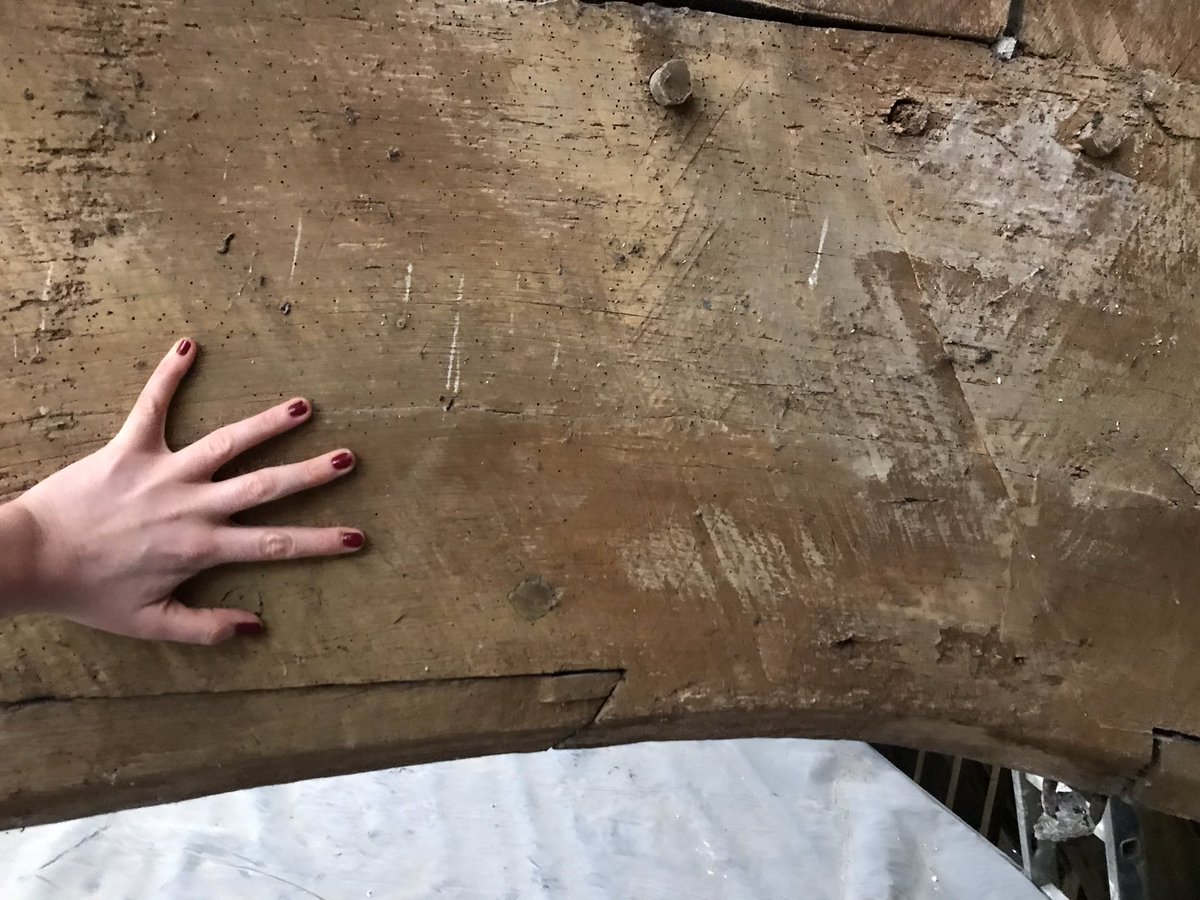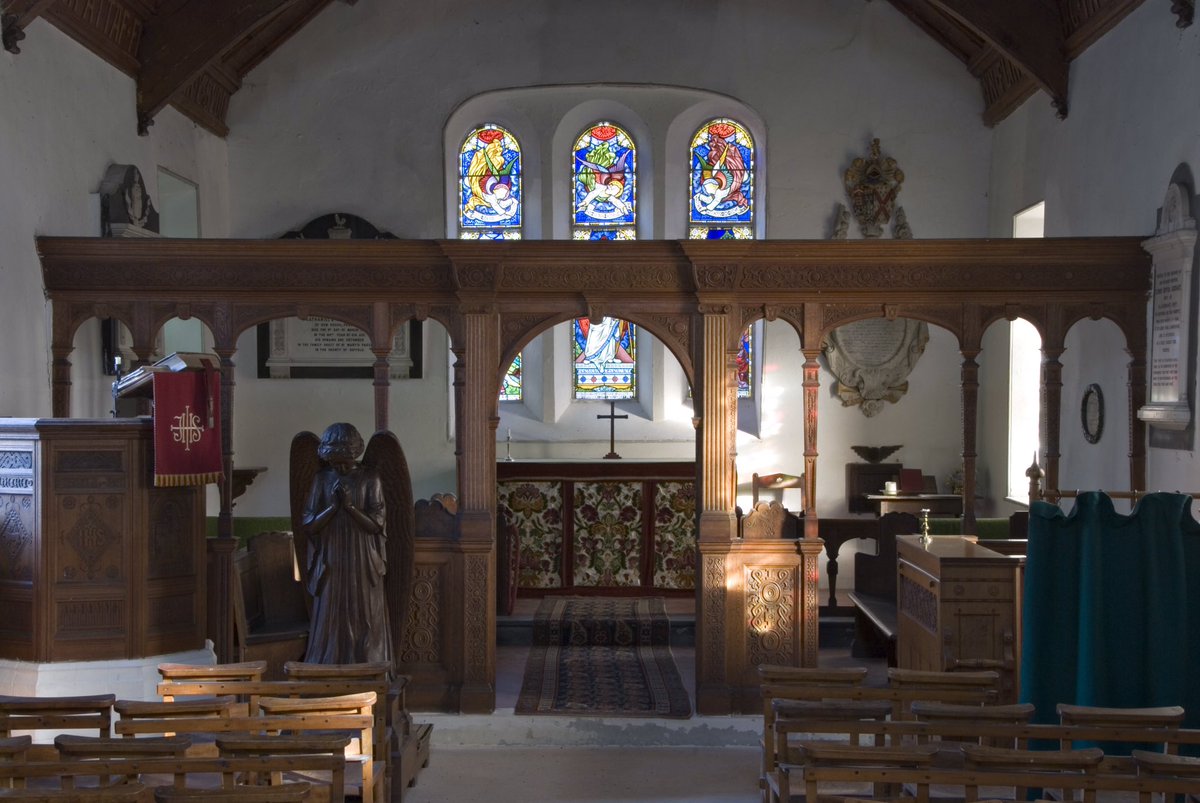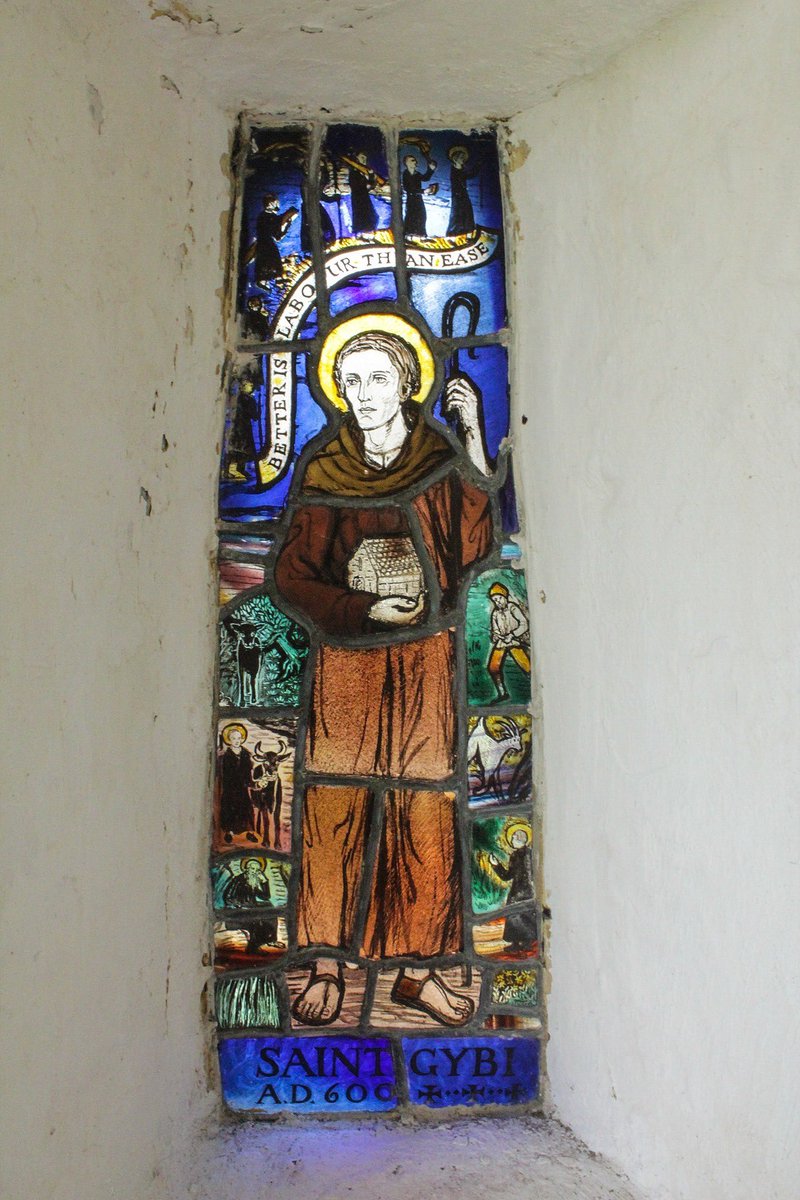
The mountain oak used to form the trusses at St Brothen’s, Llanfrothen were felled in the 1490s. At eye-level, they create a diminishing diamond shape. They form a continuous roof over the nave and chancel. It runs to 73ft (22m) and it takes 14,500 slates to cover it!
#thread
#thread

The church building dates to the 1200s, but the arch-braced roof trusses and cusped wind braces form a late 15th – early 16th c roof. They’re still doing their job perfectly.
The site slopes from east to west, and until the 19th century, the church was part of the seashore.
2/

The site slopes from east to west, and until the 19th century, the church was part of the seashore.
2/


We’ve recently re-roofed the entire church. This was the first time in about 150 years the roof had been overhauled. A combination of slipped and broken slates, and nail fatigue meant we had to strip everything back and create a watertight covering.
3/
3/

The work is exquisite - a real testament to the skill of the roofer. The scaffold too was pretty incredible – a feat of engineering!
4/

4/


For me, what’s most tantalising here are the traces of surface finish on the trusses. Were they originally limed, i.e. covered in limewash? Was this limewash an ochre colour, or was it white and the yellow colour is formed by tannins leaching from the timbers?
5/
5/

And, because you always find something new during building works: one of the copings is a slate memorial dating to mid-19th century – presumably from the last time the church was re-roofed.
6/
6/

It’s a real privilege to look after this church, and to always know that we are only a chapter in its very long story.
7/
7/

• • •
Missing some Tweet in this thread? You can try to
force a refresh





















